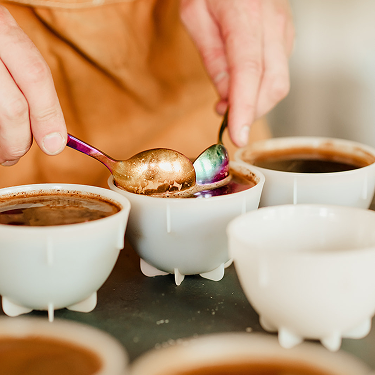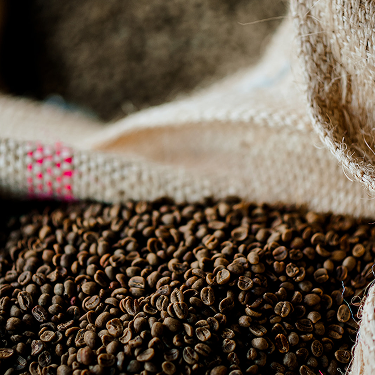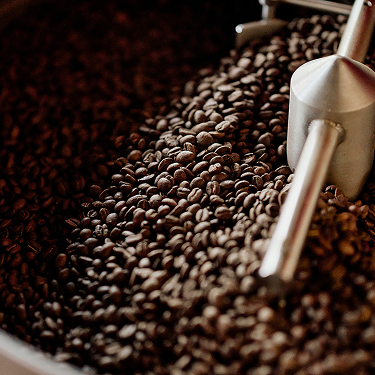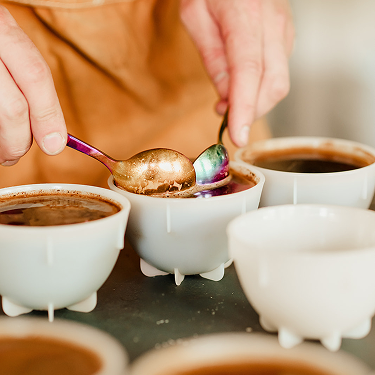
Brewing Methods and their Differences, Part 2
In part 1 of this series we took a look at the basic distinctions of coffee brewing and a more in depth look at immersion brews.
Percolation brews are more complicated than immersion brews. They are certainly more difficult to replicate consistently because more forces are at play.
First of all, percolation refers to water passing through a bed of coffee. The traditional electric percolator is indeed a variety of this method, and so is the popular automatic coffee brewer in the style of a Mr. Coffee. Espresso is another method of percolation. In all of these methods, water moves through a bed of coffee and comes out the other side with dissolved coffee solids suspended in solution.
Everything explained about immersion applies to percolation brews as well, but it is the weaker of the 2 prominent forces applied, the other being erosion. Erosion is the force applied by water as it moves through and next-to coffee particles. Erosion is more efficient at picking up coffee solubles, partly because the motion of the water helps it reach the center of each particle, partly because as the water moves it erodes away the surface of the particle, similarly to how a river erodes the edges of its surrounding soil or rock. It is more difficult to model these forces and to replicate them because the exact way the water is poured or applied to the coffee is very complex. The size of the stream, the speed of the water, and the angle at which it’s poured all affect the extraction, not to mention the preparation and state of the coffee bed.
There are many more methods of percolation than there are of immersion. Here is quick list off the top of my head:
Immersion: French press, cupping, cowboy coffee (boiled), cold brew
Percolation: auto drip, espresso, aeropress, siphon, moka pot, percolator, and the many, many, many varieties of pour over
In the 21st century, different pour over devices have been in vogue. Every year new companies invent new geometries for coffee cones that all essentially do the same thing: hold coffee filters and coffee for you to pour water through. The reason there are so many varieties is because the shape of the brewer affects the brew. The more narrow the angle of the sides, the deeper the coffee bed. If you remember the principle of diffusion, then you’ll understand that as fresh water enters a coffee bed it will be very effective at picking up coffee solubles. As it moves through the bed and becomes stronger, the principles of diffusion begin to weaken. This means that the coffee at the top layer of the bed will be extracted more efficiently than the areas at the bottom of the bed, which have only been exposed to water with high concentrations of coffee. So a deeper bed of coffee makes for a more uneven extraction.
However, it’s also important to understand that a bed of coffee is self-filtering. When brewing drip coffee, the paper filter functions more to keep the coffee bed in place, and absorb some natural oils, and less to filter out fine particles that would otherwise be in your beverage. These ultra-fine particles (known, in fact, as fines) are mostly filtered by the coffee bed itself. You can verify this by brewing a pour over or auto-drip pot and agitate the hell out of the coffee bed during the brew. If sufficiently disturbed, the fine particles in the coffee bed will migrate down, out of the bed and into the filter itself. The result will be either a very long brew time, or a stalled brew altogether; the filter will be so clogged with fines that water cannot move through.
The reason for this is a phenomenon known as fines migration. You can observe this phenomenon in a container of mixed nuts. Shake the container for a while and the largest nuts will make their way to the surface, and all of the small bits and broken pieces will compile at the bottom. It’s the same principle. So while a deep coffee bed can be worse for brewing consistency, it can also be better for fine particle retention.
Another variable to consider with pour over cones are the raised ridges inside the cone. Most of these brewers don’t have flat walls; the interiors are lined with patterns which keep the filter from creating a suction against the brewer walls. If that were to happen, the brew would be very slow. The tradeoff, however, is what is known as bypass water. Bypass water is water that ends up in your beverage but does not work its way through the coffee bed. Instead of exiting the filter at the bottom, it exits on the side, around one of those ridges. This water could contribute to extraction at the top of the bed and exit midway, or it could completely bypass the coffee entirely. Overall it leads to lower extractions and less consistency.
There are some zero-bypass brewers on the market, such as the NextLevel Pulsar, developed by astrophysicist Jonathan Gangé. These are generally pour-over style devices that prevent any water from bypassing the coffee. Personally I am a big fan.











